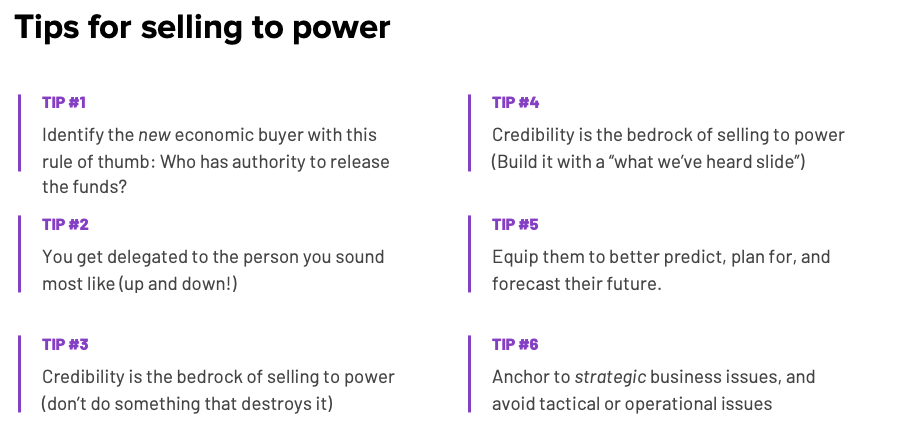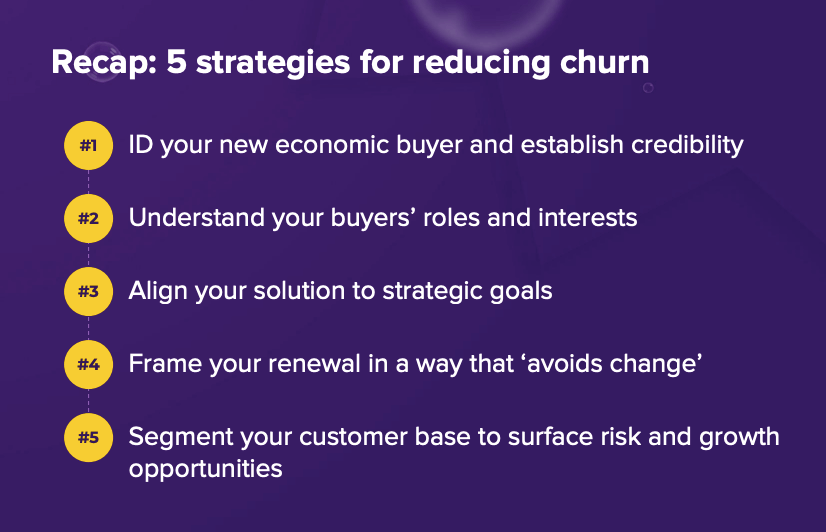Churn Reduction: 5 Powerful Strategies For Preventing Customer Churn
The world has changed dramatically.
As Nick Mehta, CEO of Gainsight said, “even though our jobs might have felt hard before going remote, they definitely seem like smooth sailing in hindsight.”
And the key to thriving in today’s economy, according to Nick? Driving more sales from customers. (Some things in sales never change!)
Nick joined a small army of Gongsters for a conversation on strategies to reduce churn.
True in a down any economy.
He was on a panel with Chris Orlob (Gong’s Director of Sales), Sam Kennedy (Gong’s Director of Enterprise Customer Success), and Devin Reed (Gong’s Head of Content) to break down five customer churn reduction strategies that have worked for Gainsight (and Gong!).
Now you can pretend you were there too…
Read on to learn why Gainsight took a ‘current-customer approach’ during the pandemic, and get the scoop on five key strategies to reduce churn that worked.
HOW TO MOVE FROM “SURVIVE” TO “THRIVE”: FOCUS ON CURRENT CUSTOMERS
Uncertainty about customer churn was top of mind for everyone. March 2020 was essentially an exercise in “How do we survive?”
Many CEOs like Nick did plenty of introspection and soul searching… and made some best guesstimates to answer this question. And, as Nick shared, it turned out the answer was right in front of him the entire time.
In a downturn, new sales tend to slow down at most companies. Uncertain times mean less “new stuff” and more doubling down on what works.
Gainsight surveyed CEOs, CROs, and COOs from late-stage, private cloud SaaS companies in late March 2020 and found that customer retention was by far their #1 focus. That data point didn’t surprise Nick.
They sent the same survey in May 2020 and found that while customer churn increased, it was not by as much as respondents had predicted. Additionally, net retention (NRR) didn’t decline as much as expected.
The global pandemic has forced organizations to revisit customer success processes. Many are finally doing the things they should have always done.
Nick summed up the importance of customer success nicely: “Your ability to thrive depends on your customers’ success.”
With that knowledge at the forefront of their approach, Nick and his team at Gainsight pivoted from “How do we survive?” to “How do we thrive?”.
Here’s what it sounded like when he talked to our Gongsters about the five key strategies that worked for Gainsight.
CHURN REDUCTION STRATEGY #1: IDENTIFY YOUR NEW ECONOMIC BUYER AND ESTABLISH CREDIBILITY
Simply stated, retention is the new growth.
Historically, according to Chris Orlob, retention meant a “freebie or a routine renewal. It was relatively easy.” Now, says Chris, “retention is a selling event that includes complex decision making, economic buyers, business pain, ROI, and so on.”
The economic buyer — the person who has the authority to “release the funds” — tends to be higher up in the company when market conditions tighten.
You’re going to have to focus on selling to power to succeed (something you should do in non-pandemic times as well). Here are six more churn reduction tips from Chris to get you there:

CHURN REDUCTION STRATEGY #2: UNDERSTAND BUYERS’ ROLES AND INTERESTS
This tip has always been important, but it’s even more critical in today’s economic environment. It’s imperative that you know who you are talking to, and what they do and do not care about.
Specifically, when you run quarterly business reviews (QBRs), use these tips from Sam Kennedy:
- Know and cater to your audience: Renewal conversations are now bumping up a level, often to the Director of Finance or the CFO. This buyer has different wants and needs than a VP of Sales, and you’ll probably need to engage in a more strategic and high-level conversation.
- Use data to craft a story your audience cares about: Data is super powerful, but when it’s used on its own, it often fails to land. The higher up you go in the organization, the more likely that is to be true. Solve this by weaving data into a story that’s connected to leading indicators of success.
- Don’t just “run your process”: It’s obvious when you are simply checking the boxes during a sales call. Instead, allow the conversation to flow naturally and organically. Genuine engagement always lands more wins.
- Recognize what is important/unimportant right now: The key to this tip is the right now. Acknowledge what is happening in their world at the moment instead of just going through the usual chatter or straight into sales motions. Ask, “how are you doing?” as a check-in to understand what has changed for them in recent months.
- Tell them something they don’t know: Ensure that your buyer leaves the conversation with new knowledge. Differentiate yourself by sharing real value, not just words.
Surprise! Two bonus (tactical) churn reduction tips from Nick coming your way:
- Manage time effectively: Get into your presentation quickly. Have one person introduce the entire team. Make the first third of your QBR agenda the “executive session.”
- Conduct joint presentations: Have someone from the client org present part of the QBR. This joint presentation is a much more robust approach.
Drop the right info: Lead with information the executive wants to hear!
CHURN REDUCTION STRATEGY #3: ALIGN SOLUTIONS WITH STRATEGIC GOALS
Chris strongly believes that you get delegated to the person you sound like. If you want to talk to the C-suite, you have to sound like them. If you get too technical, you’ll get punted over to the IT folks.
If your goal is to reach C-level executives, talk about business challenges in a strategic way. Don’t talk tactics as much.
For example, if our Gong team was selling to a sales director, talking about our solution as sales coaching platform would be perfectly reasonable. If they were selling to a CEO, they’d change the frame to “Revenue Intelligence” and understanding what your competitors are doing (top of mind for all CEOs).
Chris suggests peeling back the onion when you engage in more strategic conversations. Don’t take the customer’s challenge at face value. Dig deeper to get to more strategic issues. It’s one of the quickest (and most effective) ways to shrink customer churn.
CHURN REDUCTION STRATEGY #4: FRAME YOUR RENEWAL IN A WAY THAT “AVOIDS CHANGE”
The simplest churn reduction tip?
When you try to sell your product or service to a new customer, your goal is to disrupt the status quo. What they’re doing before your solution came along didn’t work. Your tool solves all their issues!
It’s a simple (but powerful) psychological principle called loss aversion.
BUT it completely changes for renewals!
When you renew existing customers, the status quo is your best friend. Your goal is to avoid change.
If you want to avoid churn (who doesn’t) you need to become the status quo and defend it.
CHURN REDUCTION STRATEGY #5: SEGMENT YOUR CUSTOMER BASE TO SURFACE RISK AND GROWTH
This is the core of what customer success is about — reviewing your customer base and splitting it into two segments: growth and expansion opportunities vs. risk potential.
However, in a COVID-world, it’s essential to add a third layer of segmentation: Understanding what impact the pandemic has had on each renewal company’s business.
Nick says to fit customers into three buckets: negatively affected, neutrally affected, and positively affected.
You then focus your renewal energy on customers who are primed for growth with your organization AND neutrally or positively affected by COVID-19.
Nick even suggests trying to expand customers who are not getting a lot of value from your product. “Sometimes expansion is the key to getting a lot of value.”
Our Gongster, Sam, encourages teams to be proactive when it comes to COVID-19. It’s more important now than ever to get in front of any potential issues instead of waiting for them to come across the CSMs desk. You can monitor your customer interactions with customer retention management software (for example) to surface churn signals and other KPIs your CS team tracks in your book of business and address them early.
STEAL THESE 5 STRATEGIES TO REDUCE CUSTOMER CHURN
Start implementing these five churn reduction strategies today. We’re using them at Gong and we can see a marked improvement.
In case you’re more of a TL;DR kind of person, here is a copy of the summary slide from the webinar:

Or tune in to the full recording here on our 5 strategies to reduce churn webinar.
Not sure if you have a churn problem?
Here’s everything you need to run a thorough churn analysis.